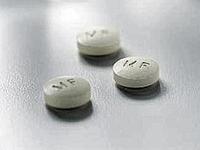Medical Abortion
ABORTION PILL: MEDICAL ABORTION OVERVIEW
|
Learn About Medical Abortion with Mifepristone and Misoprostol. |
Information On This Page:
MEDICAL ABORTION
What is Medical (drug-induced) Abortion?
Medical abortion is a term used in medical literature to describe a procedure or regimen that uses various pills to end an established pregnancy. (1) (2)
Medical abortion is a drug induced alternative to surgical and vacuum aspiration abortion for women who elect to terminate an early pregnancy. (3)

MIFEPRISTONE |
Medical abortion terminates an early pregnancy through the use of two drugs; Mifepristone and Misoprostol. (4) |

MISOPROSTOL |
Mifepristone, often called “The Abortion Pill”, or RU-486, is an anti-progestin that blocks the action of progesterone which is necessary to establish and maintain placental and embryo attachment. (5) (6)
Mifepristone is used in conjunction with misoprostol, a prostaglandin analogue, available in the United States under the brand name Cytotec®. Misoprostol, when administered orally or vaginally, stimulates uterine contractions that expel the embryo and placental tissue. (5)
Though reference to mifepristone as the “abortion pill” makes early medical abortion sound like a simple procedure, it actually involves the administration of two drugs on separate days, a span of several days before the abortion occurs and up to 2–3 weeks of bleeding and spotting. (7)
Medical abortion using mifepristone plus the prostaglandin misoprostol is the most effective method of abortion at gestations of less than 7 weeks. (8)
MEDICAL ABORTION Q & A
What is the FDA approved regimen for medical abortion?
In 2000, the U.S. FDA approved Mifeprex (mifepristone) for the termination of early intrauterine pregnancy, defined as 49 days or less counting from the last menstrual period. (4) (See U.S. FDA Approved Medical Abortion Regimen – Dosage and Administration)
The FDA-approved regimen for medical abortion consists of taking: (9)
- 600 milligrams (mg) (three 200 mg tablets) of mifepristone orally on Day 1 in the provider’s office
- 400 micrograms (mcg) (two 200 mcg tablets) of misoprostol orally on Day 3, also in the provider’s office.
- A post-treatment examination is to be completed on approximately Day 14.
Why are physicians using alternative/unapproved medical abortion regimens?
FDA is aware that many medical practitioners use of off-label or modified (alternative/unapproved) regimens, which may include prescribing different doses of mifepristone and misoprostol, dosing misoprostol on a different day, and/or advising patients that the misoprostol tablets be inserted into the vagina. (10)
Although off-label prescribing — the prescription of a medication in a manner different from that approved by the FDA — is legal and common, it is often done in the absence of adequate supporting data. (11)
Unapproved drug uses are those that do not appear in a product's U.S. Food and Drug Administration (FDA)-approved labeling and are not approved by the Agency. Such uses commonly are referred to as "off-label," or "unapproved” uses. (12)
The safety and effectiveness of Mifeprex (mifepristone) off-label dosing regimens, other than the one approved by FDA, including use of oral misoprostol intravaginally, has not been recognized and accepted by the FDA. (13)
What qualifications must a provider have to administer mifepristone and misoprostol to a patient for medical abortion?
(See PRESCRIBER'S AGREEMENT)
The gestational age must be determined before a provider can administer mifepristone and misoprostol to a pregnant woman. (4)
The provider must have the ability to diagnose ectopic pregnancy.
The provider administering mifepristone and misoprostol for medical termination of early pregnancy must be able to provide surgical intervention or have made plans for the provision for such care through other qualified physicians, and be able to assure patient access to medical facilities equipped to provide blood transfusions and resuscitation, if necessary. (4) (See DOSAGE and ADMINISTRATION)
Each patient must be provided a Medication Guide. The provider must fully explain the procedure to the patient, provide the patient with a copy of the MEDICATION GUIDE and PATIENT AGREEMENT, patient must have the opportunity to read and discuss them, and the patient and the provider needs to sign the Patient Agreement document.
What are some differences between medical and surgical abortion?
Medical abortion has been associated with higher rates of prolonged bleeding, nausea, vomiting, and pain than is surgical abortion, and the rate of use of pain drugs is greater with medical abortion. Moreover, medical abortion has a lower rate of success than surgical abortion. (14)
MEDICAL ABORTION HEALTH RISKS
What are possible health risks of medical abortion?
The potential risks of medical abortion include: (2) (See HEALTH RISKS)
- Failure: Incomplete Abortion, Continuing Pregnancy, Birth Defects
- Bleeding & Hemorrhage
- Infection
- Death
- Severe Pain
- Undiagnosed Ectopic Pregnancy
- Nausea, Vomiting, Diarrhea
- Damage to the Uterus (15)
- Induced Abortion & Autoimmune Disease
- Medical abortion & Future Pregnancy
- Mifepristone-Induced TTP
Surgical intervention may be required for failed abortion, excessive bleeding, pregnancy tissue left in the uterus, or other serious medical conditions. (9) (See BOXED WARNINGS and WARNINGS)
Infection and death have been reported in previously healthy women. (13) (16) (17)
Mifepristone may predispose to lethal infection by impairing a patient’s immune response caused toxigenic Clostridium sordelli and other pathogens. (18) (19)
Medical abortion with mifepristone and misoprostol can involve the risks of serious complications, infection, and death. (9)
UNDERSTANDING THE ISSUES & RISKS OF MEDICAL ABORTION
What important medical abortion issues should patients consider?
It is important for patients to be fully informed about the issues and risks of medical abortion with mifepristone and misoprostol. Patients need to understand: (4) (5) (13)
- Risks and benefits of all available options; medical or vacuum abortion options.
- Detailed information about choosing a specific regimen; whether it is an FDA approved regimen or an unapproved alternate regimen commonly used by providers.
- The length of time the patient can expect the entire process to take.
- The amount of bleeding a patient may experience, including the size of clots and the embryonic tissue a patient may see.
- The risks, warning signs, side effects, possible complications or death.
- Pain management, follow-up care, and what to do if the patient has any questions.
- Accessibility to a medical care facility in case of an emergency.
- The need for follow-up visits especially on the 14th day after mifepristone is administered to confirm the pregnancy has been terminated and there are no complications.
- The need for a surgical intervention or vacuum aspiration abortion procedure if medical abortion is incomplete or a failure.
1. Prine, Linda, et al., et al. Medical Abortion: Outcomes in a Family Setting. The Journal of the American Board of Family Medicine 23 (4). [Online] July-August 2010. [Cited: June 27, 2011.] http://www.jabfm.org/cgi/content/full/23/4/509.
2. Mayo Foundation for Medical Education and Research (MFMER). Medical Abortion: MY00819. Mayo Clinic. [Online] February 10, 2010. [Cited: June 27, 2011.] http://www.mayoclinic.com/health/medical-abortion/MY00819/
3. IPAS. Medical Abortion – Implications for Africa . IPAS. [Online] June 1, 2003. [Cited: June 24, 2011.] http://www.ipas.org/en/Resources/Ipas%20Publications/Medical-abortion–Implications-for-Africa.aspx
4. U.S. Department of Health & Human Services. Label, Mifeprex (mifepristone) Tablets, 200mg, Rev 4:4/22/09. Drugs @FDA, U.S. Food and Drug Administration. [Online] April 27, 2009. [Cited: July 20, 2011.] http://www.accessdata.fda.gov/drugsatfda_docs/label/2009/020687s015lbl.pdf.
5. UCSF Center for Reproductive Health Research & Policy: San Francisco. Early Medical Abortion: Issues for Practice. Bixby Center for Global Reproductive Health. [Online] July 2001. [Cited: June 15, 2011.] http://bixbycenter.ucsf.edu/publications/files/EMAR.pdf.
6. Ulmann, Andre, Teutsch, Georges and Philibert, Daniel. RU 486. Scientfic American Volume 262. June 1990, pp. 42-48.
7. Jones, Rachel and Henshaw, Stanley. Mifepristone for Early Medical Abortion: Experiences in France, Great Britain and Sweden. Guttmacher Institute. [Online] May/June, Volume 34, Number 3 2002. [Cited: January 18, 2011.] http://www.guttmacher.org/pubs/journals/3415402.html.
8. RCOG. The Care of Women Requesting Induced Abortion. Royal College of Obstetricians and Gynaecoligists. [Online] September 1, 2004. [Cited: June 24, 2011.] http://www.rcog.org.uk/womens-health/clinical-guidance/care-women-requesting-induced-abortion.
9. U.S. Department of Health & Human Services. Drugs, Labeling and Regulatory History from Drugs@FDA, Mifeprex (mifepristone) Medication Guide, Rev 3: 4/22/09. FDA, U.S. Food and Drug Administration. [Online] July 19, 2011. [Cited: July 20, 2011.] http://www.fda.gov/downloads/Drugs/DrugSafety/UCM088643.pdf.
10. Janet Woodcock, M.D., Deputy Commissioner of Operations, U.S. Food and Drug Adminstration. Mifepristone: Approval Process and Postmarketing Activities. U.S. Department of Human & Health Services, U.S. Food and Drug Administration. [Online] May 17, 2006. [Cited: June 21, 2011.] http://www.fda.gov/newsevents/testimony/ucm112562.htm.
11. Stafford, Randall S. Regulating Off-Label Drug Use — Rethinking the Role of the FDA. New England Journal of Medicine; 358. April 3, 2008, pp. 1427-1429.
12. U.S Department of Health & Human Services, U.S. Food and Drug Administration, William B. Shultz, Deputy Commissioner for Policy. Promotion of Unapproved Drugs and Medical Devices. U.S Department of Health & Human Services, U.S. Food and Drug Administration. [Online] February 22, 1996. [Cited: June 29, 2011.] http://www.fda.gov/NewsEvents/Testimony/ucm115098.htm.
13. U.S. Department of Health & Human Services. Drugs, Mifeprex Questions and Answers, 2/24/2010. FDA, U.S. Food and Drug Administration. [Online] February 24, 2010. [Cited: July 16, 2011.] http://www.fda.gov/Drugs/DrugSafety/PostmarketDrugSafetyInformationforPatientsandProviders/ucm111328.htm.
14. Christin-Maitrem, S, Bouchard, P and Spitz, IM. Medical termination of pregnancy. New England Journal of Medicine, 342(13). March 30, 2000, pp. 946-56.
15. Pfizer Inc. Cytotec labeling: Misoprostol tablets. Pfizer: Cytotec Physician Prescribing Information. [Online] September 2009. [Cited: June 15, 2011.] http://labeling.pfizer.com/ShowLabeling.aspx?id=559.
16. Fischer, M, et al., et al. Fatal toxic shock syndrome associated with Clostridium sordellii after medical abortion, N Engl J Med;353:2352-60. New England Journal of Medicine. [Online] December 1, 2005. [Cited: July 20, 2011.] http://www.nejm.org/doi/pdf/10.1056/NEJMoa051620.
17. Cohen, Adam, et al., et al. Toxic Shock Associated With Clostridium sordellii and Clostridium perfringens After Medical and Spontaneous Abortion. Obstetrics & Gynecology, November 2007-Volume 110 -Issue 5 -pp 1027-1033. [Online] November 2007. [Cited: July 16, 2011.] http://journals.lww.com/greenjournal/fulltext/2007/11000/toxic_shock_associated_with_clostridium_sordellii.14.aspx.
18. Risks of mifepristone abortion in context. McGregor, JA and Equiles, O. November 2005, Contraception Journal, Volume 72, issue 5, p. 393.
19. Miech, Ralph P. Disruption of the innate immune system by mifepristone and lethal toxin of Clostridium sordellii. Journal of Organ Dysfunction. 2007, pp. 1-5, i-First article.
20. United States Government Accountability Office. Food and Drug Administration: Approval and Oversight of Mifeprex, GAO-08-751. GAO: U.S. Government Accountability Office. [Online] August 7, 2008. [Cited: June 27, 2011.] http://www.gao.gov/new.items/d08751.pdf.
Page Last Updated: 7/25/2012



Comments on this entry are closed.